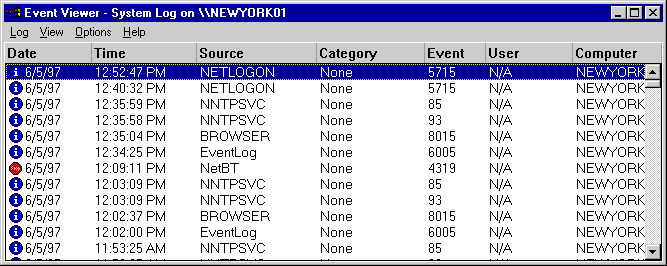
| Maintenance and Troubleshooting | << | >> |
|---|
Windows NT logs events to application logging files that enable you to track significant events such as a server with a full disk or an interrupted power supply. You can use Windows NT Event Viewer to display, search, and maintain the application event logs for Microsoft Exchange Server computers and set alerts that notify you when there are problems. Because events differ considerably in their significance, you can set the level of detail of logged events by configuring the Diagnostics Logging property page on Microsoft Exchange Server components.
Each Microsoft Exchange Server component generates different kinds of events based on the functions it performs. The following table shows a few examples of Microsoft Exchange Server events.
| Component | Events |
|---|---|
| All components | Start, failure to start, stop. |
| System attendant | Problems in routing table calculation, generating e-mail addresses, errors writing to the tracking log. |
| MTA | Opening and closing connections to other servers, transport problems, failed connections, and connection errors. |
| Directory | Replication request, success and failure messages, garbage collection, and changes in the security attributes. |
| Public information store | User logon and replication. |
| Private information store | User logon, sending, and receiving. |
| Administrator program | Replication configuration. |
| Directory import | Import start and finish, errors in importing, and warnings on possible problems. |
| Directory synchronization | Synchronization errors. |
| Security events | Logon, logoff, and privileged use. |
| Internet Mail Service | Mail connectivity, Internet services, and scheduled connection times. |
For more information on Windows NT Event Viewer, see your Windows NT Server documentation.
